With the best table saw blade, you can make a wide variety of cross, rip and dado cuts. Here are our top choices.
Our editors and experts handpick every product we feature. We may earn a commission from your purchases.Learn more.
With the best table saw blade, you can make a wide variety of cross, rip and dado cuts. Here are our top choices.
Our editors and experts handpick every product we feature. We may earn a commission from your purchases.Learn more.
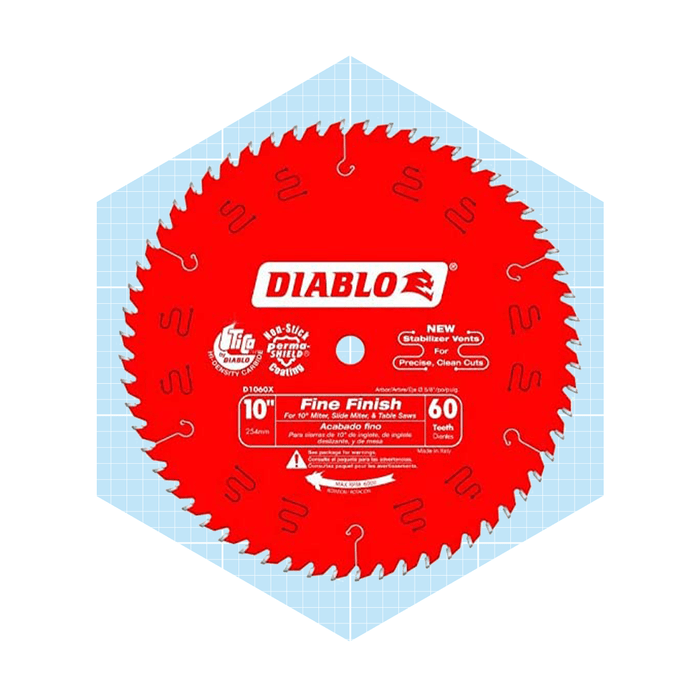 via merchant
via merchant
Twelve stabilizer vents on the surface of the Freud’s Diablo D1060X Table Saw Blade reduce noise and vibrations, preventing wobbles and inaccurate cuts. It also features 60 teeth, making it ideal for performing crosscuts easily and effectively. A non-stick coating on the blade prevents wood pitch from gumming up this blade, reducing wear and tear and corrosion. Psst! Learn how to use paste wax for table saw lubrication.
Pros
Cons
You’ll want a ripping blade to complement it
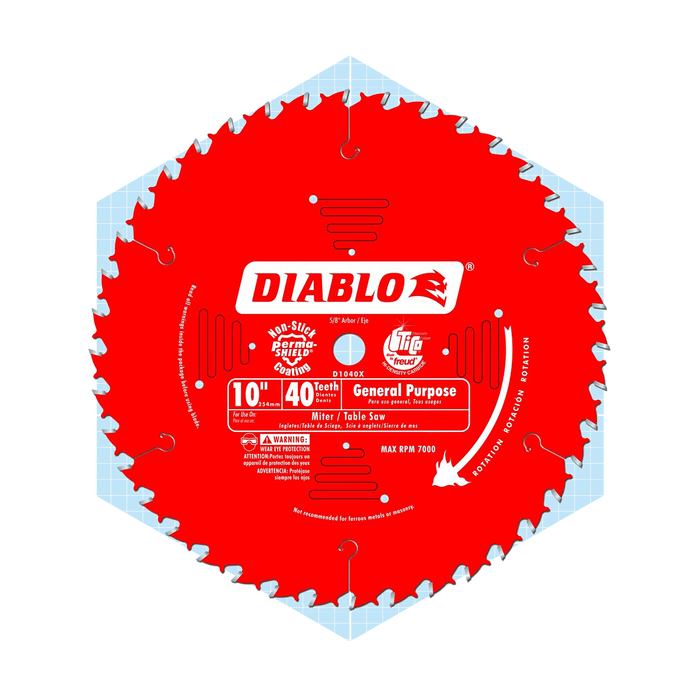 via merchant
via merchant
If you’re looking for a combination blade for a wide range of cutting tasks, the Freud D0740A Diablo Table Saw Blade is an excellent choice. Its 40 teeth are well-suited for crosscuts and rip cuts, and can also be used in your miter saw. Made of a high-density carbide, the teeth are durable enough to stand up to frequent use. A protective finish helps resist heat and corrosion.
Pros
Cons
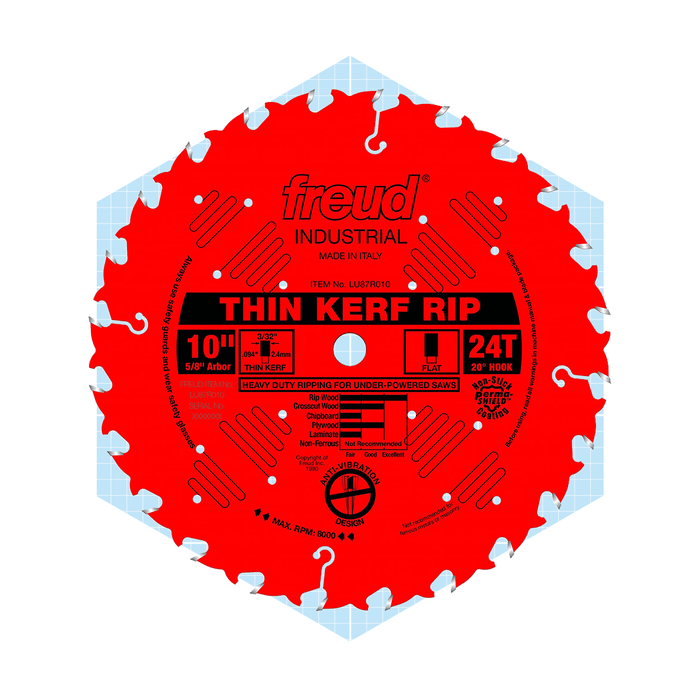 via merchant
via merchant
The 24 heavy-duty teeth on the Freud LU87R010 Table Saw Blade are perfect for executing long rip cuts, plus they’re convenient to sharpen. This blade can handle wood from 3/4-in. to 2-3/4-inches thick.
A non-stick coating prevents the buildup of pitch that causes unnecessary drag. Combined with the energy-saving thin kerf, it’s efficient enough to use with an under-powered table saw.
Pros
Cons
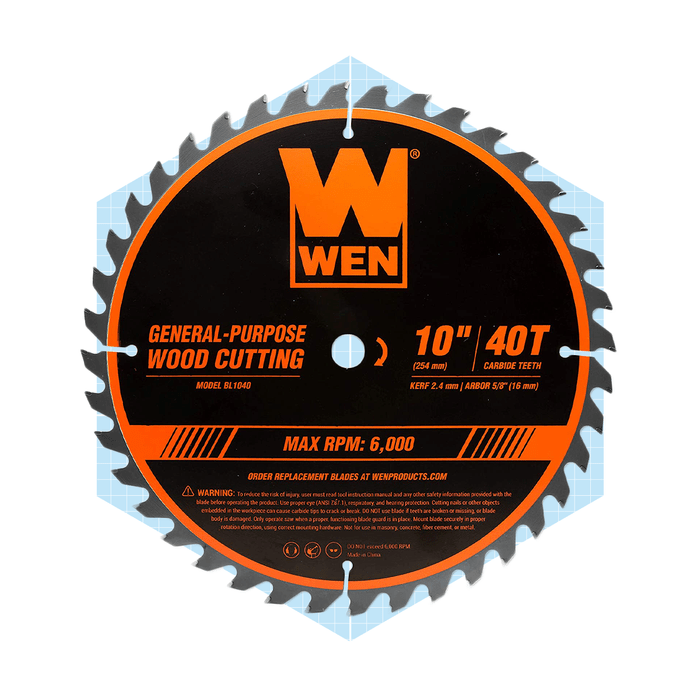 via merchant
via merchant
If you’re in the market for an inexpensive multi-purpose table saw blade, there’s no better deal out there than the WEN BL1040. WEN’s BL1040 blade has 40 teeth and works excellently with hardwoods, softwoods and sheet goods of all types. It comes with high-end features, such as heat expansion slots, thin kerf design and a protective coating to prevent gumming and burning. All at a price comparable to a fast food meal.
I keep one of these around the shop at all times. In the event that a beautiful piece of lumber comes along that may have a few nails embedded in it, it is better to ruin this blade than a more pricey one.
Pros
Cons
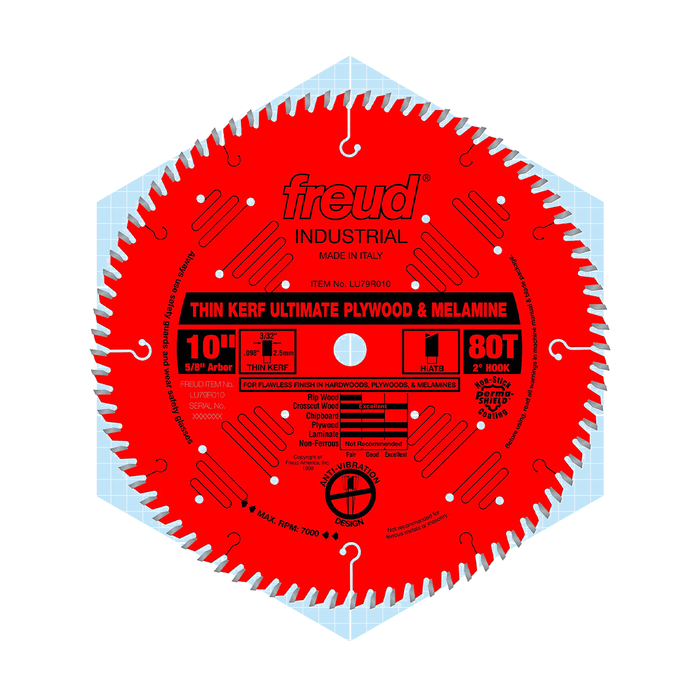 via merchant
via merchant
With 80 high-density carbide teeth, the Freud Ultimate Blade LU79R010 makes extremely smooth cuts quickly. Thanks to laser-cut slots that reduce vibration and prevent splintering, cuts made with this blade are straight and true.
This blade works especially well with delicate materials like melamine and veneered plywood. It’s expensive, but worth it if you need to make fine cuts.
Pros
Cons
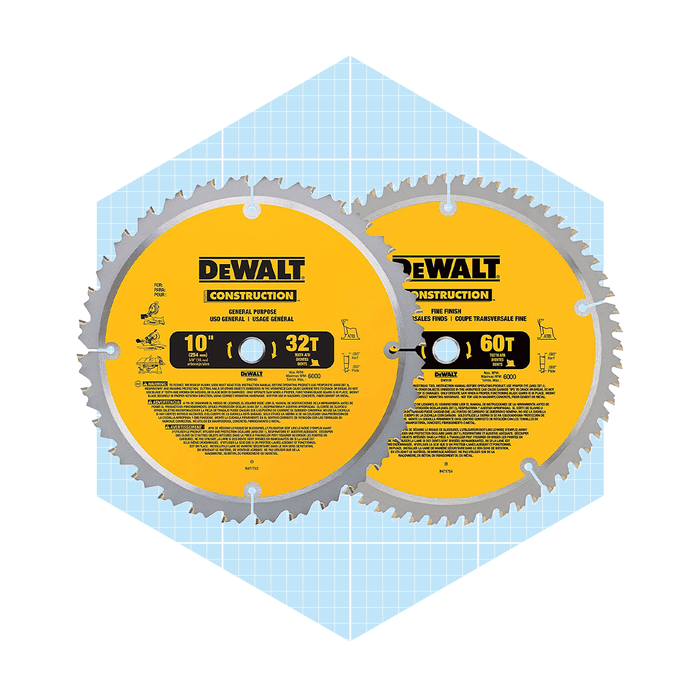 via merchant
via merchant
If you’re looking to refresh your ragged saw blade collection before a substantial DIY project, the DeWalt DW3106P5 Saw Blade Combination Pack is an affordable way to do so. The DeWalt combination pack contains a 10-inch, 60-tooth fine-finish blade and a 32-tooth general purpose blade. Suitable for use with any 10-inch miter saw or table saw, these blades are ideal for projects that involve any softwood, hardwood, chipboard or plywood products.
The thin-kerf blades provide rapid cutting results with minimal debris. While the wedge shoulder places additional steel behind each tip improving the blade’s durability and performance. You can’t beat two high quality blades for the price of one.
Pros
Cons
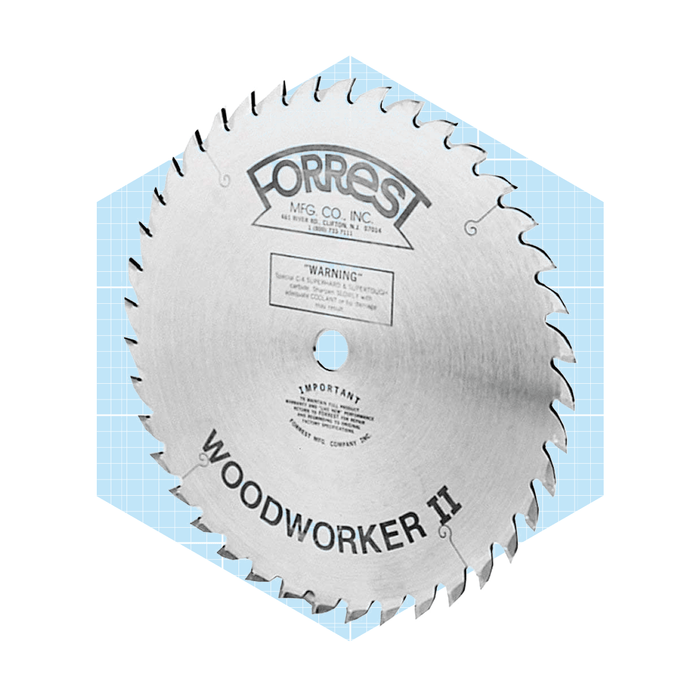 via merchant
via merchant
Although it’s priced significantly higher than any other blade on our list, the rugged construction and heavy-duty cutting capability of the Forrest Woodworker II Table Saw Blade is worth the price.
The 10-inch, 48 tooth count is versatile enough for cross and rip cuts up to two inches thick, and durable enough for hardwoods like maple. This blade is also available in a range of diameters, tooth counts, arbor and kerf sizes. That makes it useful for a range of wood thicknesses, saw power levels and cuts.
As well as manufacturing quality saw blades, Forrest sharpens them, too. Simply, send them your dulled Woodworker II, and for a nominal fee, they will sharpen them and ship them back to you, razor sharp from the factory and ready to be used again.
Pros
Cons
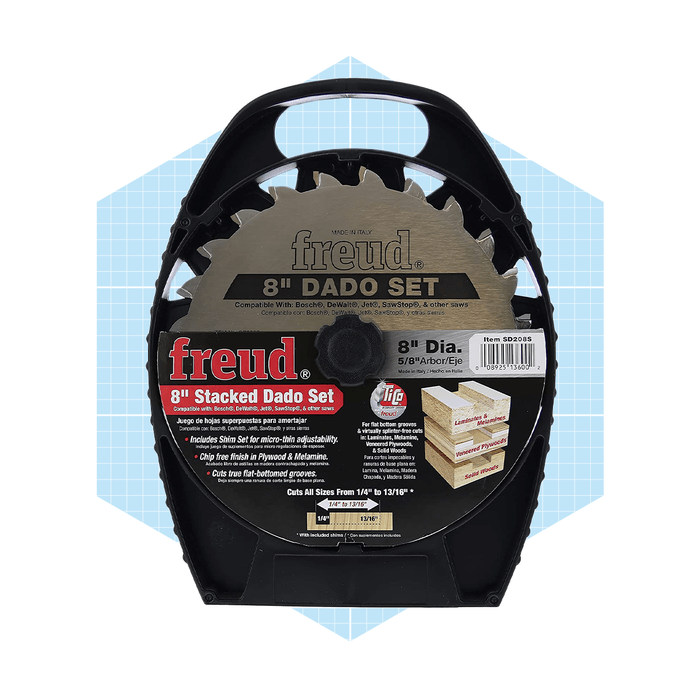 via merchant
via merchant
You can easily create a range of joinery cuts and grooves using the Freud 8-Inch Stacked Dado Set, which includes a pair of 12-tooth blades and wing chippers. Combined with included shims, the Freud Stacked Dado Set can produce 1/4- to 13/16- inch wide grooves in laminate, melamine, plywood or solid lumber. Freud Dado Sets are available in both six- and eight-inch diameter sizes, so there’s a version available for both safety brake equipped saws and underpowered saws.
Pros
Cons
I’ve spent more than five years as a residential and commercial carpenter specializing in custom furniture construction and installation. Now, I use my hands-on experience and expertise to craft product reviews and buying guides in the home improvement, DIY and appliance space.
We consulted Brad Rodriguez, founder of Fix This Build That to learn more about how to find the right table saw blade for your project. Rodriguez channeled his love of woodworking into building a website that teaches everyone from beginners up to seasoned woodworkers how to complete various projects.
The best table saw blade depends on the type of cuts you’ll be making and the material you’ll be using. Most table saw blades are 10 inches in diameter and are suitable for most cutting tasks. If you need to cut material thicker than 1-1/4-inch, choose a 12-inch blade. If you’re not sure what you’ll be cutting, your best bet is to go with a combination blade. Before making a purchase, always ensure the blade size matches your table saw’s specifications.
In general, a higher tooth count tends to provide a smoother finish. “More teeth for finer cuts, like in crosscutting, and fewer teeth for rip cuts in wood grain,” says Rodriguez. Blades with more teeth make smaller, finer cuts, reducing tear-out and leaving a cleaner surface. However, the optimal tooth count depends on the specific task. For fine woodworking and crosscutting, a blade with 80 or more teeth may be preferred; while for rough ripping, a blade with fewer teeth (20 to 32) may be more appropriate.
For hardwood, look for a combination blade with a carbide tip and a moderate tooth count (around 40 to 50 teeth). A combination blade strikes a balance between crosscutting and ripping capabilities, making it versatile for various woodworking projects. The carbide teeth ensure durability and sharpness when cutting through dense hardwood, providing clean and efficient results.
To achieve the smoothest cuts, a crosscut blade with a high tooth count and an alternate top bevel (ATB) tooth configuration is recommended. ATB blades have alternating bevels that create a shearing action, resulting in clean and smooth cuts across the wood grain. A high tooth count blade (one with more than 80 teeth) is best for producing fine finishes and precision cuts.